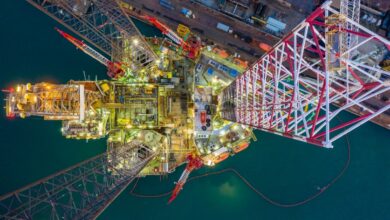Halliburton launches automated continuous circulation system
Halliburton has released the e-cd Plus system, which automates and enhances continuous circulation connections during drilling and tripping operations. Continuous circulation provides the uninterrupted flow of drilling fluid into the well throughout the process of adding or removing drill pipe joints to the drill string.
After connecting the system to surface control equipment, a proprietary software remotely controls all steps of the flow diversion and side port connection process that is currently completed via manual operation. The overall system maintains a small footprint and can reduce the number of rig personnel required to safely provide continuous downhole circulation.
The system also helps improve success in challenging projects, such as wells with narrow pore pressure/fracture gradients, by keeping bottomhole pressure and fluid properties constant, cooling equipment in high-pressure and high temperature applications and providing continuous wellbore cleaning by movement of cuttings in extended-reach wells.
“We designed the e-cd Plus system to meet the growing market demand for continuous circulation technology in highly regulated markets by improving safety, efficiency and reducing overall connection time to save valuable rig time,” said Daniel Casale, Vice President of Testing and Subsea. “With the automated system, not only is a dual pressure barrier maintained during operations, but it has the versatility to run either as a standalone solution or to be used in managed pressure drilling operations to help reduce risk in difficult wells.”
On a recent project in the North Sea, an operator was previously unable to reach target depth due to poor cuttings movement and wellbore stress. They deployed the automated diversion portion of the e-cd Plus system to provide continuous circulation over two well sections and approximately 6,800 ft of total open-hole drilling. The operator successfully reached total depth and cemented the liner in each section, helping eliminate the challenges that halted operation in the previous offset well.




